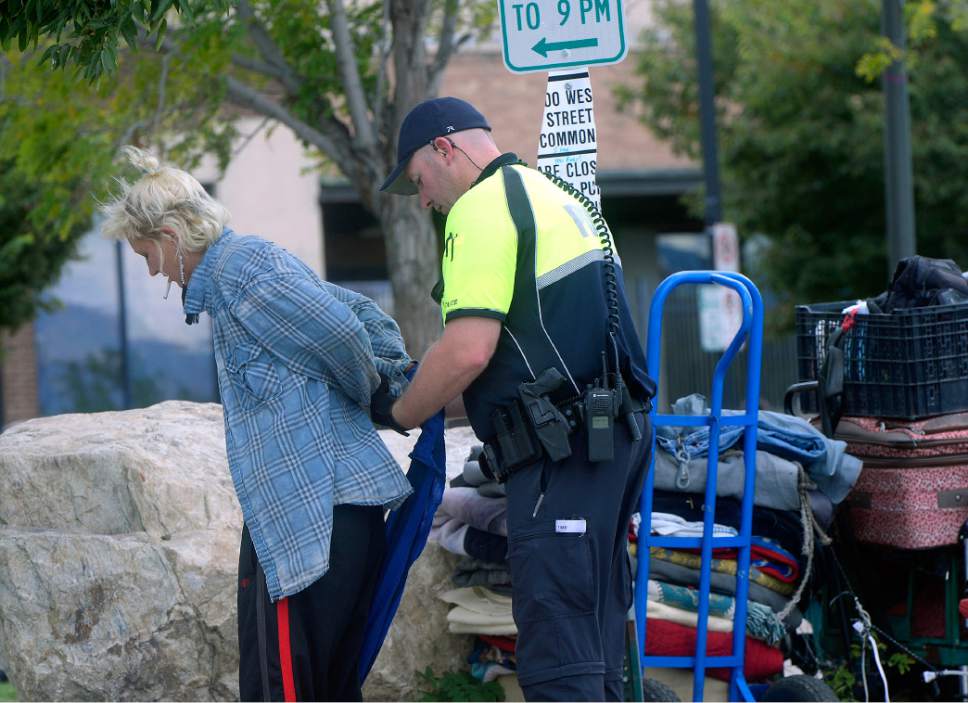This is an archived article that was published on sltrib.com in 2017, and information in the article may be outdated. It is provided only for personal research purposes and may not be reprinted.
A joint undertaking by Salt Lake City and Salt Lake County to urge homeless people with addictions or mental illness into treatment looks to be having some success, based on early data.
A report released this week on Operation Diversion reveals that a significant number of those who chose treatment over jail continue to participate in programs, although a similar amount have dropped out of rehabilitation.
The new numbers, although preliminary, look hopeful, said Alyson Heyrend, spokeswoman for Salt Lake County Mayor Ben McAdams.
"What people are heartened by," she said, "is that they are seeing that if we had funding for more treatment beds, more people would opt for treatment."
Operation Diversion was aimed at the homeless and others who congregate near The Road Home shelter on Rio Grande Street. The neighborhood, particularly 500 West between 200 South and 400 South, has seen an increase in campers, drug dealers and chaos.
The initiative, to date, has been comprised of three major operations in the area that netted a total of 132 people on allegations ranging from selling heroin to being drunk in public, or for having outstanding warrants.
Of them, 68 sought treatment, 60 went to jail, and four were hospitalized, according to the report.
Since the last operation, on Oct. 7, another 127 people have been guided to the treatment program, Heyrend said.
According to the report, of the 259 total, 84 remain in treatment, 82 dropped out, 67 are waiting for treatment, one successfully completed treatment, eight were hospitalized and 16 fell into various other categories.
Those numbers are "awesome," said Shawn McMillen, executive director of First Step House, an organization that treats addiction.
Long-term studies show that 35 percent to 38 percent of addicts recover from initial treatment, McMillen said. That number increases to 65 percent to 70 percent after addicts complete three such treatment programs. The remaining 30 percent have severe addictions, he said, and find success daunting.
Many of the people who are participating in Operation Diversion most likely fall into that latter category, McMillen said. Addicts with a severe condition usually have had a difficult life, beginning in childhood, he noted. Most have suffered trauma of some kind and began using alcohol and drugs during their teen years.
Experts now believe addiction is a chronic condition that requires ongoing management, McMillen said.
"It's a chronic disorder, like diabetes. If you do not manage it, you will die from it," he said. "But if you manage it, you will live a healthy, productive life."
Addiction is a big problem in this country, McMillen said. Only one in 20 Americans who suffer from some form of addiction ever seek treatment.
The report on Operation Diversion comes four months after its inception. Treatment programs usually last four to six months, Heyrend said, meaning that data in the coming weeks will be more accurate. The program, she said, also seeks to track participants to determine success rates.
Salt Lake City police are now using the model on a day-to-day basis for those who aren't felony offenders, said Detective Greg Wilking. It's the humane thing to do, he said, and ultimately costs less.
For example, he said, a shoplifter may have drug abuse or mental illness problems.
"We want to look at the reason they are coming into the system," Wilking said. "If we can nip it in the bud, it gives them a better chance of recovery before long-term harm."
The first six months of the initiative was funded with $1.2 million from Salt Lake County.
The county has pledged another $650,000 and hopes the city will chip in a similar amount to continue Operation Diversion for another six months.
Matthew Rojas, a spokesman for Salt Lake City Mayor Jackie Biskupski, said the administration is budgeting a match to continue the program for that period.



